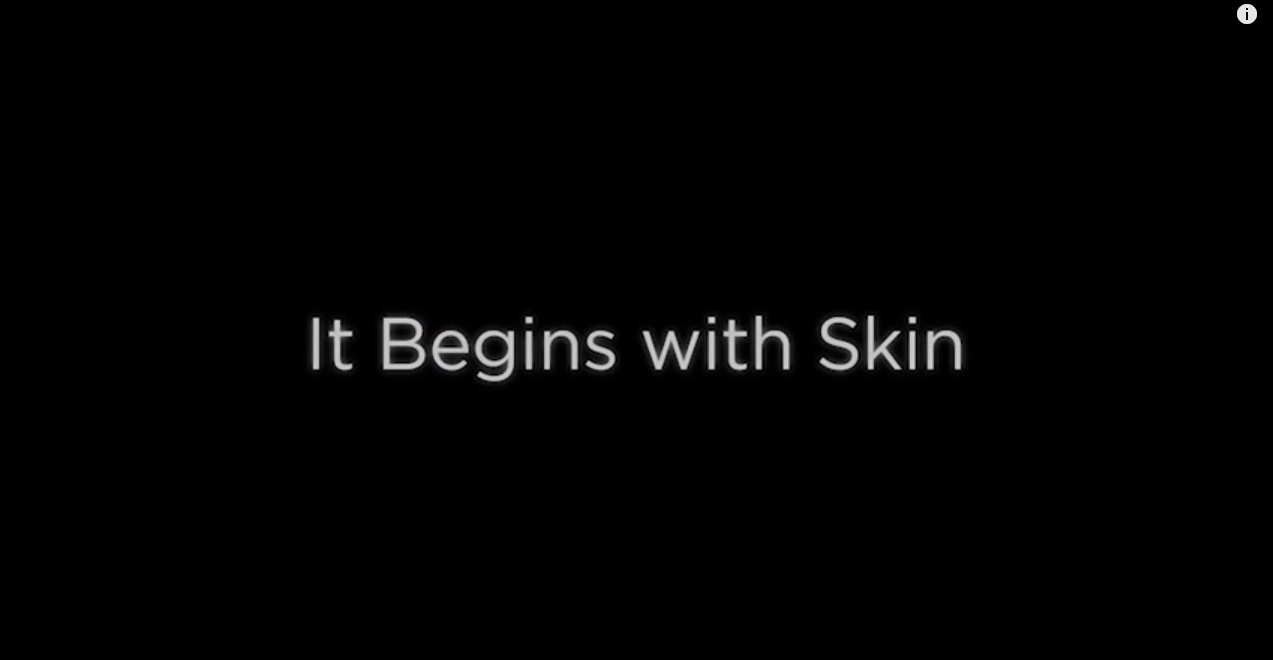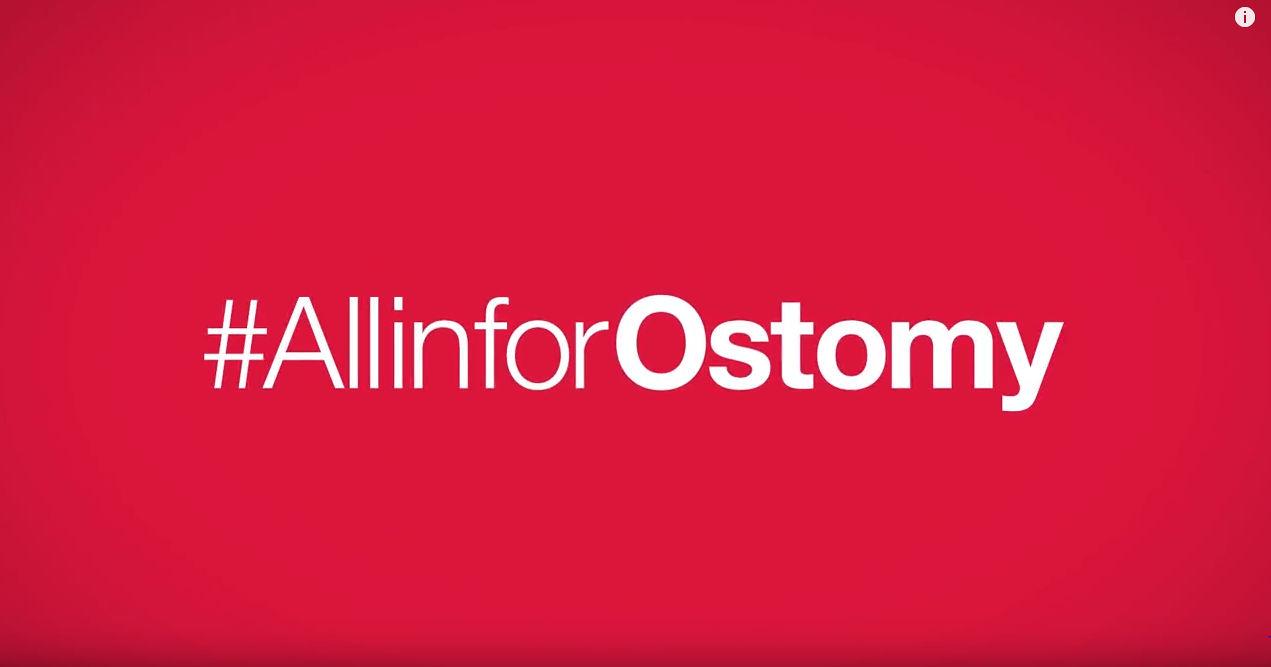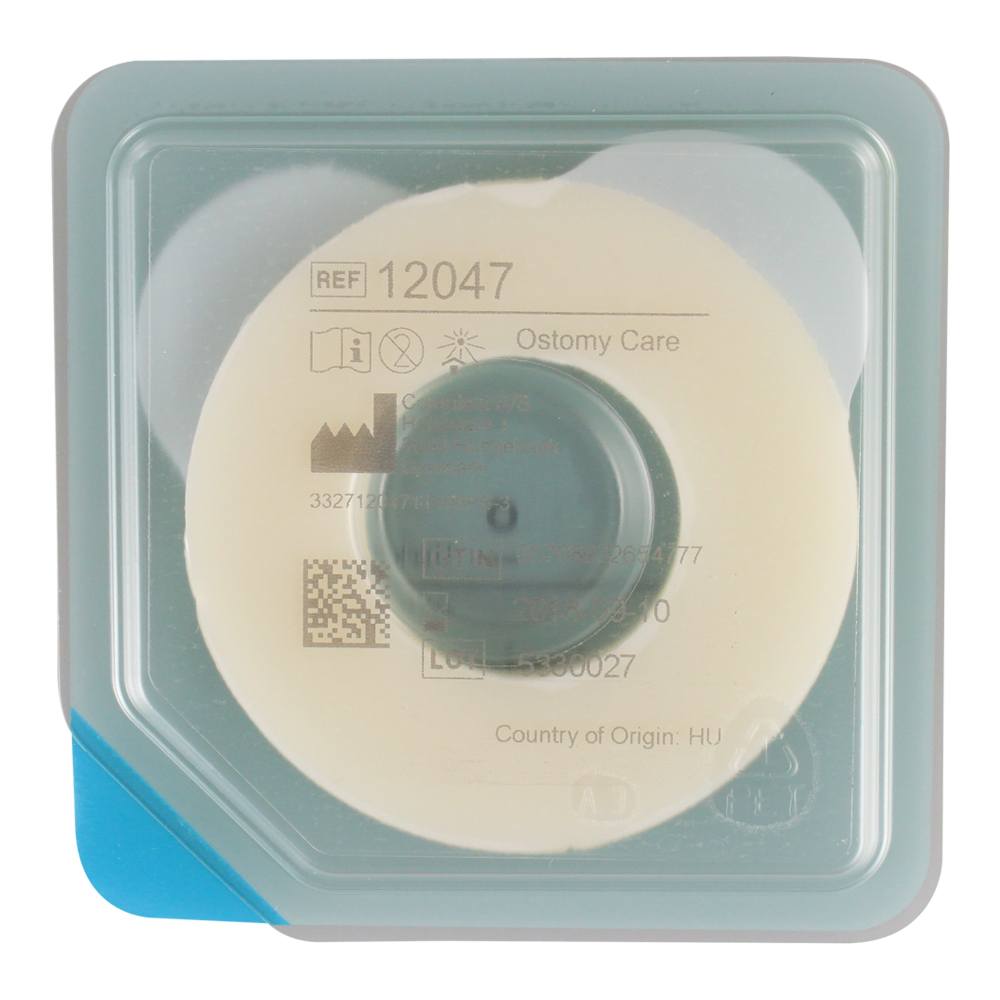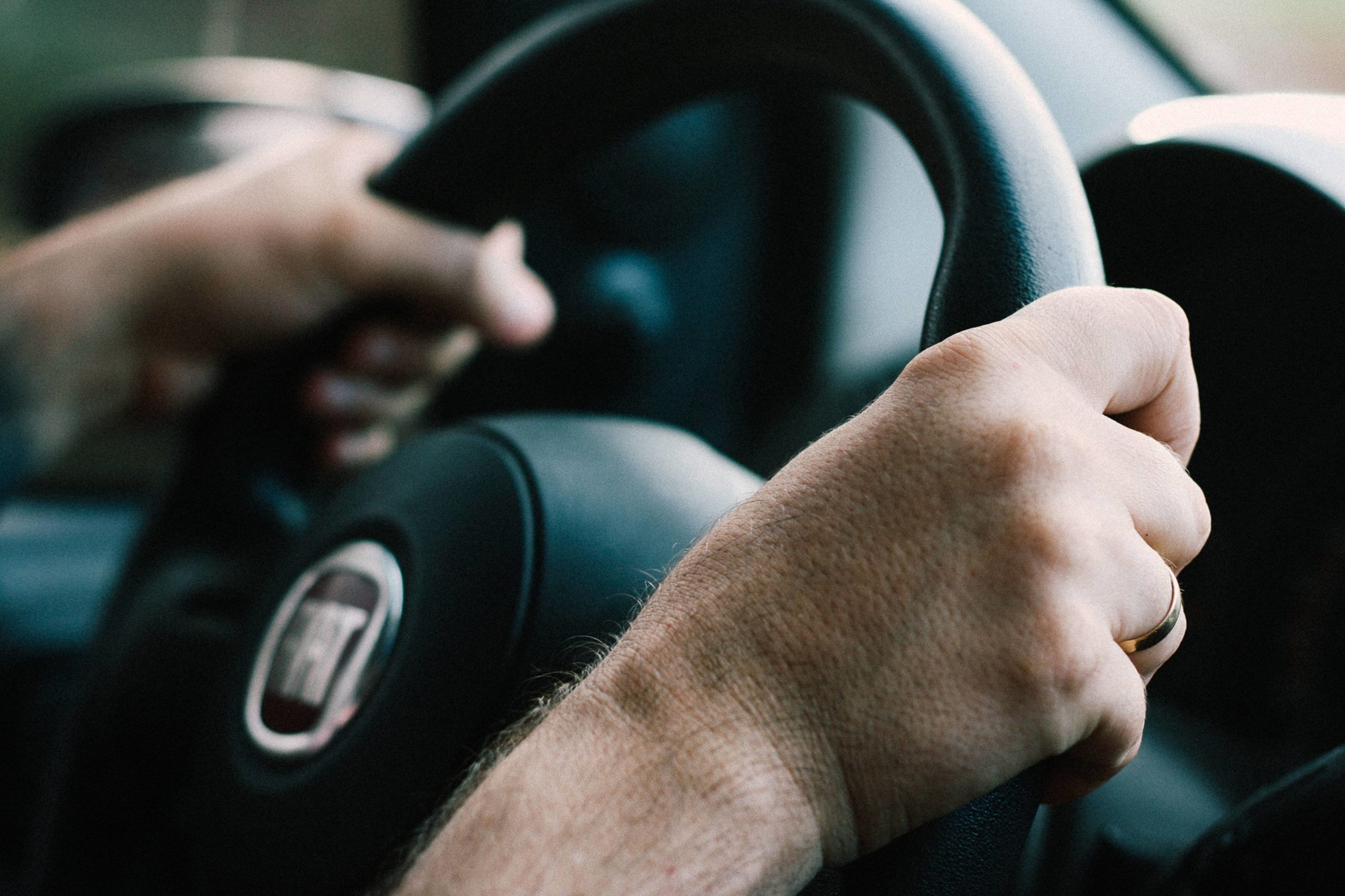
It Begins with Skin: A Global Perspective | All in for Ostomy Virtual Conference 2018






Welcome back friends! In Part 1 of this series we discussed the proper use of barriers in preventing leakage around your stoma. Now we’ll look at a few of the supplemental products designed to help achieve that same purpose!
Paste
Paste should be applied around the outside of the stoma, filling any gaps that may be left between the stoma and inside edge of the barrier. The paste will dry into a rubbery substance, forming a seal that provides an added layer of protection and helps keep output away from the peristomal skin. As we discussed previously, it is vital to keep the area directly around the stoma free from leakage, which can potentially cause severe skin ailments.
Also, it’s very important to keep in mind that stoma paste is in no way an adhesive. Many people hear the word paste and they think of the goopy rubber cement they remember from elementary school. But, in fact, it has no sticky properties whatsoever. If you were to spread stoma paste underneath your barrier before sticking it to your stomach (more people try this than you’d think), it would fall off very quickly. Instead think of it as like caulking you’d squirt around your bathtub – something to fill in the cracks.
Rings
Some manufacturers call them barrier rings. Others call them stoma rings or wax donuts or barrier seals. Whatever the terminology, they’re simply small circles made from a tacky, putty-like substance. They can be stretched, scrunched or sculpted to fit snugly around the stoma. They fill the gaps, just like paste.
Rings were in fact developed as an alternative to paste, which requires time to dry after application and often contains alcohol, which can sting sensitive peristomal skin. The idea was to create a product that does everything paste does but better, and with none of the drawbacks. For the majority of people, rings simply do a better job of obstructing leakage while being easier to apply and remove. By doing away with the need to squeeze out a substance from a tube, manufacturers created a product much more friendly to those with dexterity issues. Also beneficial is the lack of crusty leftovers stuck to the skin that are so often the bane of paste users. It can take lots of adhesive remover to get that stuff off (more on adhesive remover products in a future post).
Rings are also quite versatile. They come in a variety of sizes, thicknesses and convexities. This provides maximum accommodation for various ostomy situations. Depending on your needs, rings can be pulled apart and used in pieces if necessary – a feature particularly useful to those with irregular or oblong stomas. This is also beneficial in cases where there are dips in the skin around the stoma due to surgery scars. In these instances, rings can be used in pieces to fill in valleys and create a flat surface for the barrier to adhere.
Barrier Extenders
Barrier extender strips are another fairly recent addition to the accessory cannon. This time, the aim was to improve upon simple medical tape. Even though barriers these days are quite advanced – being made of space-age caliber flex materials and featuring state-of-the-art adhesives – there are still many people who are in need of extra security.
For years ostomates had used tape around the edges of barriers for security and peace-of-mind. This was especially true for those carrying a little extra around the midsection or whose ostomies were located in less than ideal places, such as between skin folds. Those folks now have a much better option. Again, out of marketing necessity, barrier extenders go by different names depending on the manufacturer. But they are all essentially the same thing: thin, flexible strips, meant to be used in pairs or groups of three to form a frame around the barrier, conforming to skin contours and keeping the barrier edges from peeling up. Most are curved, shaped like crescent moons that form a circle when combined. Certain manufacturers also make strips that are extra-large or straight strips, for those used to the old tape strips. Some are also Y-shaped, which are designed to retain adhesion of barriers located inside skin folds.
The sticky side of the strips are formulated with hydrocolloid, a substance developed to be safe and comfortable on skin and also to promote healing. Aside from being generally good for the skin, hydrocolloid also allows for a rather surprising second use for barrier strips. Many folks who suffer from skin irritation around the stoma tend to use the strips underneath rather than on top of, the barrier. This gives them a layer of protection from the barrier’s adhesive and allows the skin to heal.
* * *
Well, there you have it – a few examples of products that each do a little to make an ostomate’s life easier. We’ll chronicle even more in the next installment. Until then, be sure to check out these products and more on Medical Monks dot com!
Adam Page

About the Author
Adam Page is a Continuing Care Specialist for Medical Monks, Inc. Medical Monks is medical supply retailer serving consumers and businesses across the United States since 2016. Reach out to our Care Specialist team at customercare@medicalmonks.com. With a combined 125+ years of experience in the medical supply industry, our specialists can answer any question in the categories of ostomy, wound care, urology and skin care.

When it comes to ostomy products, leakage is your enemy. If you want to keep your pouch secure and, more importantly, keep the skin around your stoma healthy, output anywhere but inside the pouch is to be avoided at all costs. No matter which ostomy procedure you underwent, the output from your stoma is acidic, and if left in contact with the skin for a period of time can cause redness, sores and even open wounds. Your first line of defense against these kinds of unfortunate situations is, appropriately enough, the barrier.
You may know it as the wafer, or the patch, or as “the circle thing that sticks to my stomach.” Whatever you call it, it’s the single most important element of your ostomy setup.
A barrier’s main job – really its only job – is to stick. Maintaining the barrier’s adhesion is critical if you don’t want a mess on your hands. If it’s starting to peel or pop off after a short period of time – say, less than a day after it’s applied – leakage around the stoma is most often the culprit. In most cases, choosing the correct barrier will avoid these problems.
Stoma Shape and Cut-to-Fit vs. Pre-Cut
A good place to start when selecting a barrier is to take stock of the size and shape of your stoma. Ideally, it will be round and protrude from your skin about an inch. The idea is for the stoma to peek up through the hole in the center of the barrier and be snugly nestled inside, thereby allowing the output to drain safely into the pouch without compromising the skin or creeping underneath the inside edges. If you’re one of those lucky few with a perfect stoma – whose surgery went smoothly and body cooperated flawlessly – then your stoma type is well suited for an easy fit in a standard, flat barrier. But as we all know, very few things in life are perfect. Stomas are no exception.
So what’s the solution for all the imperfect stomas out there? Enterprising medical manufacturers have developed a wide range of products designed to accommodate most ostomy conditions.
Say your stoma does protrude but, like most, it isn’t in the shape of a perfect circle. Whether it’s an oval or a trapezoid, you’re probably still a good match for a flat barrier. Start off by measuring the diameter at its widest point. Then select a barrier that fits that range. If you’re using a cut-to-fit, follow the circular pattern that matches your measurement.
If you’re new to this and like the idea of using a pre-cut barrier, you should keep a few things in mind. Most important is that the stoma will usually fluctuate in size for a time after the surgery. That’s why almost all hospitals initially set up new ostomates with pre-cut models. Since pre-cut barriers are one-size-only you could run into major problems if your stoma grows or shrinks a millimeter or two. Be sure that your stoma size is fixed before you commit to a pre-cut model. Another concern should be accessories. If you decide to use a barrier ring or paste, you may want to experiment with different opening sizes to get the desired fit. So you should be sure of your accessory arrangement before committing as well.
In both of these scenarios, there will likely be extra space at certain points between the stoma and the edge of the barrier. But don’t fret. There are products, such as the aforementioned moldable rings and paste, that are designed to fill in the gaps. We’ll get into those in a later installment.
Convexity
Perhaps your stoma barely protrudes, or doesn’t protrude at all. Or maybe it’s flush with the skin or even inverted (i.e. sunken down below the surface of the skin). These are common issues that may be the result of surgical conditions or sometimes occur because the patient has a little extra baggage in the tummy region. Whatever the cause, there are products that can help. Most manufacturers we sell here at Medical Monks offer a line of convex barriers.
Convex barriers were developed to allow a stubborn stoma to poke through. Rather than being a flat disc, a convex barrier slopes down towards the center. They’re also generally made with sturdier material, which allows the slope to gently push down the skin surrounding the stoma, forcing the little guy to push up through the center hole.
Over the years, manufacturers have developed many variations of the convex barrier, including soft and light convexity, which are more flexible discs that allow for maximum comfort even as the stoma is held securely in place. There are also more sturdy models, like deep convex barriers, which are generally used for more extreme cases, like inverted stomas, or for folks with a little more heft in the midsection.
Convexity has probably been the most significant advance in ostomy management technology. Thousands of ostomates are able to live normal lives because of it. If you’re having trouble keeping your stoma in the correct position, chances are convexity is the answer.
A Note About One-Piece Pouching Systems
If you’re a one-piece user you’ve probably noticed this post refers (at least implicitly) to the barrier as a separate entity from the pouch. However, the pointers outlined above are equally applicable to one-piece systems. It’s industry standard for nearly all barrier models to be available in one and two-piece configurations. So whatever your pouching preference, all the benefits of barrier technology will be available to you.
So, there you have it: barriers broken down. Next time on the Ostomy Files we’ll discuss the various accessories available on the market and how they can help you guard against the ever-present creep of moisture around your stoma. See you then!
Adam Page

About the Author
Adam Page is a Continuing Care Specialist for Medical Monks, Inc. Medical Monks is medical supply retailer serving consumers and businesses across the United States since 2016. Reach out to our Care Specialist team at customercare@medicalmonks.com. With a combined 125+ years of experience in the medical supply industry, our specialists can answer any question in the categories of ostomy, wound care, urology and skin care.

We talk to a lot of customers who call us and want to place a phone order for their medical supplies. Customers share their situation and many are quick to tell us why they are calling and paying for their own supplies. Here are the top 5 reasons they give:
1. No Health Insurance
2. High-Deductible Health Plan
3. Dealing With Health Insurance Is Too Complicated
4. Don’t Like Your Health Insurance authorized Medical Supplier
5. Like the Convenience of Ordering Supplies Online From A Specific Vendor
I hope this helps spell-out many of the reasons people are reaching for their credit or debit cards to get the supplies they need. If you have reasons not listed hear I’d love to hear from you by dropping me a note at scott.hetland@medicalmonks.com.
About the Author
Scott Hetland is President of Medical Monks, Inc. with experience in the Medical Industry for last 12 years. Medical Monks is medical supply retailer serving consumers and businesses across the United States since 2016. Reach Scott at scott.hetland@medicalmonks.com.

As the Beatles lyric goes “Its a long and winding road!”
Applying ostomy appliances securely and safely can also be a long and winding road to success. Without proper application, there is greater risk of skin irritation, discomfort or the need for time consuming reapplication.
I am always on the lookout for good articles to pass along to our visitors / customers. Here is a great article from our friends at Hy-Tape on the subject of Adhesives:
Here at Medical Monks we sell a variety of Hy-Tape products – click here to see our selection:
Hy-Tape Products Sold By Medical Monks
I hope you benefit from this blog post – take care.
Scott
For more information about MEDICAL MONKS and advice on Ostomy products please visit our website at https://www.medicalmonks.com or call us at 844-859-9400.
About the Author
Scott Hetland is President of Medical Monks, Inc.. Medical Monks is medical supply retailer serving consumers and businesses across the United States. Reach Scott at scott.hetland@medicalmonks.com.

The Brava Protective Seal creates a seal between stoma and baseplate and is designed to protect against leakage and protect the skin. The seal is also easy to shape to fit around your stoma, to apply and to remove from your skin.
The Brava Protective Seal has a new polymer formulation that is designed to protect against leakage and protect the skin, thereby providing dual protection. It is easy to shape so it fits snugly around the stoma and can be applied over skin with dips, creases and folds. When it’s time to remove your barrier, the seal can be removed easily and cleanly, together with the barrier, leaving minimal residue behind.
The Brava Protective Seal seals any gaps between the skin around the stoma and the ostomy barrier/wafer. A new polymer formulation makes it resistant to aggressive output, so it will not disintegrate or get broken down by the output that comes into contact with it. The new polymer formulation helps to maintain healthy skin in two distinct ways. First, it absorbs moisture like sweat and oils from the skin’s surface. Secondly, when removed, it leaves minimal residue behind. This makes the skin around the stoma easier to clean. Brava Protective Seal is easy to shape, so it fits snugly around the stoma and can be applied over skin with dips, creases and folds. The seal will stay firmly in place, but when the time comes for removal, it can be pulled cleanly and easily away from the skin.

Living with a Stoma – The Patient Perspective

Living with a Stoma – The Patient Perspective

Living with a Stoma – The Patient Perspective

Living with a Stoma – The Patient Perspective

Living with a Stoma – The Patient Perspective

Living with a Stoma – The Patient Perspective

Living with a Stoma – The Patient Perspective